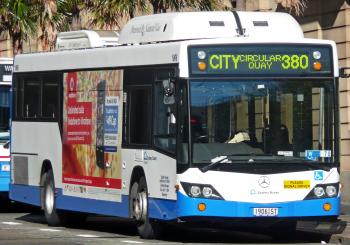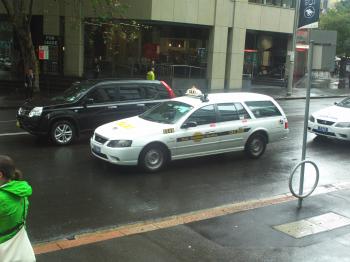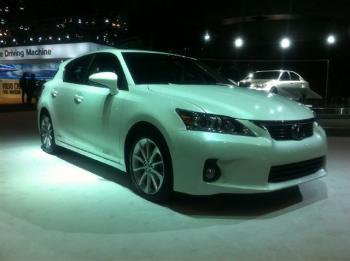Getting Around Sydney
Getting Around Sydney
All City Transport Options: What Locals Use and What’s Best for Tourists
General Overview
The transport system in Sydney is quite different from what you might expect, especially if you come from a place with a more straightforward setup. Seriously, when I first tried to navigate it, I was completely baffled—like, why are there so many different modes of transport? But don't worry, you'll get the hang of it!First off, Sydney has a pretty efficient public transport system comprising buses, trains, and ferries. It’s a great way to explore the city, especially if you're heading to popular spots like Circular Quay or Bondi Beach. Most public transport runs from around 5 AM until midnight, but you'll find some services running a bit later on weekends.
Now, one common mistake visitors make is relying too much on taxis or rideshares. While they might seem convenient, you’ll end up spending a fortune—especially during peak hours. Instead, grab an Opal card. It’s super handy for all kinds of transport and can save you a lot of cash. A regular adult fare for a train ride can be around $4.20, but if you’re traveling during off-peak times, it's less. Plus, the Opal card gives you a discount on multiple journeys in a week.
Oh, before I forget, a local hack I learned the hard way is to avoid the trains on Friday evenings—rush hour is brutal! I once got stuck on a packed train heading to Parramatta for dinner, and it was a lesson I’ll never forget.
One pleasant surprise was how lovely the ferry rides are. Taking the ferry from Circular Quay to Manly on a sunny day is magical—totally worth it! Plus, it’s a great way to avoid traffic.
Also, it’s nice to know that local transport terms like “Lightrail” throw some visitors off; it just means the light rail service that connects Central Station to Darling Harbour and beyond. Just remember, during warmer months, it can get pretty hot on the buses without air conditioning, so arrive a bit early and aim for shaded areas if you can.
In terms of price comparisons, a day trip to the beaches might only cost you around $14 with an Opal card, while you could easily spend $50-60 on a taxi round trip. And be mindful that transport prices might hike during public holidays, so plan your trips accordingly.
Wrap up with a practical route tip: If you're off to Bondi, take the 333 bus from Circular Quay; it runs frequently and is a pretty easy ride. Keep your eyes open—Sydney's transport might seem quirky, but once you get in the rhythm, it becomes a breeze!
Types of Transport

popular with tourists
The bus system in Sydney offers extensive coverage across the city and its suburbs, making it an excellent option for tourists to explore popular areas like Bondi Beach, Manly, and the Sydney Opera House. To pay for your bus fare, you can use an Opal card, which costs around AUD 10 for the card itself, or simply tap on with a contactless debit or credit card, with adult fares starting at around AUD 2.20 for short distances. A key tip for tourists is to download the Transport for NSW app, which provides real-time bus schedules and route information, helping you plan your trips more effectively. For time-saving, it’s recommended to check the bus timetable ahead of time, particularly during weekends or public holidays when services may be less frequent. Lastly, always be aware of your surroundings and keep your belongings secure, as you would in any busy city, especially during peak seasons when buses can be crowded.

popular with tourists
Taxis in Sydney are widely available and can be hailed from the street, booked via phone, or requested through various taxi apps. Fares typically start at around AUD 4.40, with an average cost for a ride from the Central Business District (CBD) to Bondi Beach being approximately AUD 30-40, depending on traffic and time of day. A key tip for tourists is to always check if the meter is running; if not, insist on this before starting your journey. For convenience, payment can be made via cash or card, but it’s always good to have some cash on hand for smaller rides or in case a taxi doesn't accept card payments. Additionally, for safety, only use licensed taxis—identified by their distinctive yellow signs and markings—and consider sharing your ride details with a friend or family member if traveling alone after dark.

The auto in Sydney is a convenient way to explore the city and its surrounding attractions, with an extensive network of roads and highways connecting various key destinations. To use a car, you can either rent one from major companies at the airport or in the city, with costs ranging from AUD 50 to AUD 100 per day, plus fuel and insurance; consider using credit cards for deposits and payments for easier transactions. A great tip for tourists is to avoid peak hour traffic (7 AM - 9 AM and 4 PM - 6 PM) to save time; also, make use of GPS or navigation apps like Google Maps to get real-time traffic updates and alternate routes. Important safety considerations include adhering to local speed limits, which are typically 50 km/h in urban areas, and being mindful of the fact that Australia drives on the left side of the road. Additionally, keep an eye out for toll roads, such as the Eastern Distributor, where you will need an electronic tag or a temporary e-Toll pass to avoid hefty fines.
Here you can learn about all types of transport in Sydney. What transport is available, how to reach tourist attractions and which mode of transport is optimal.
